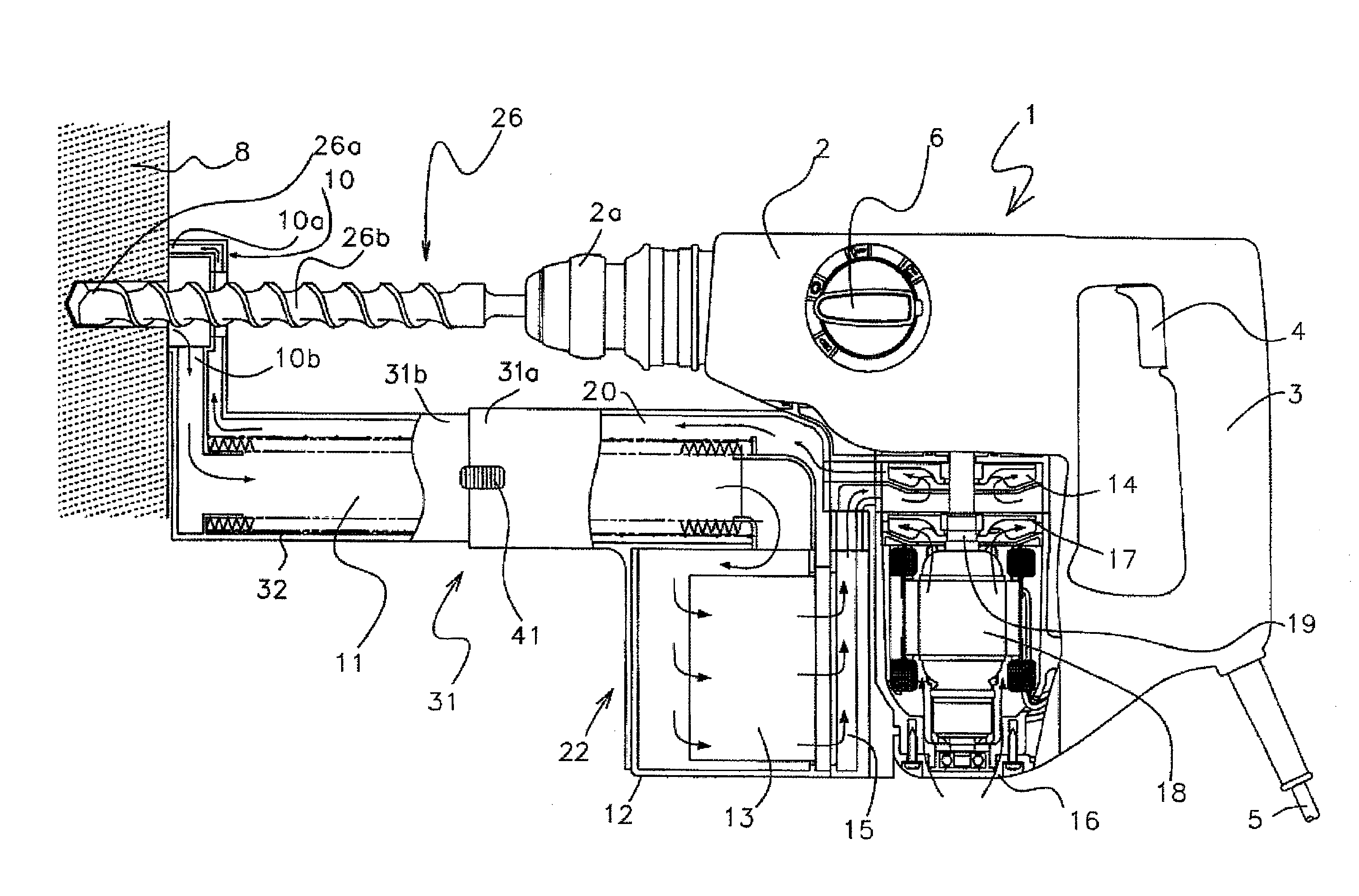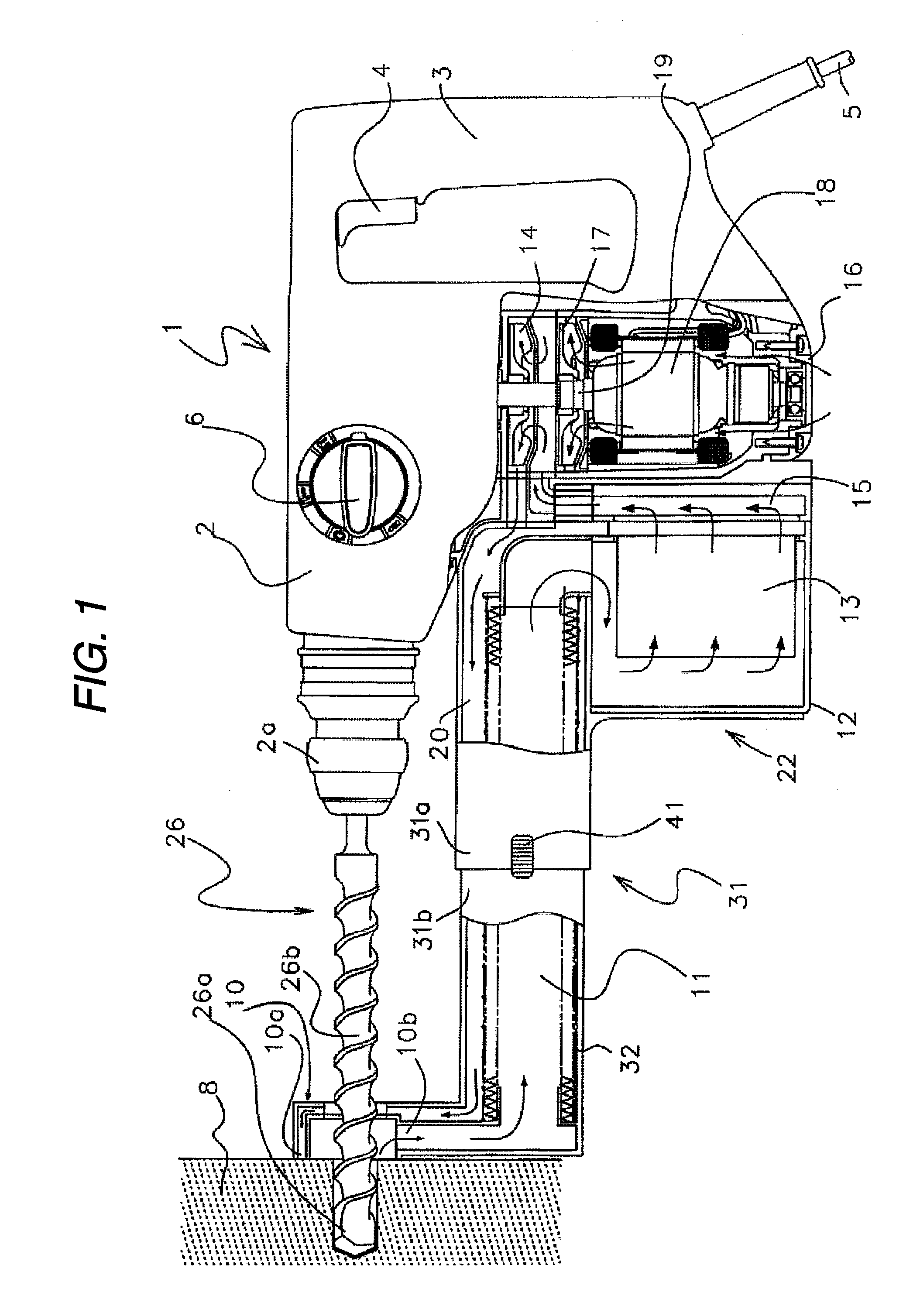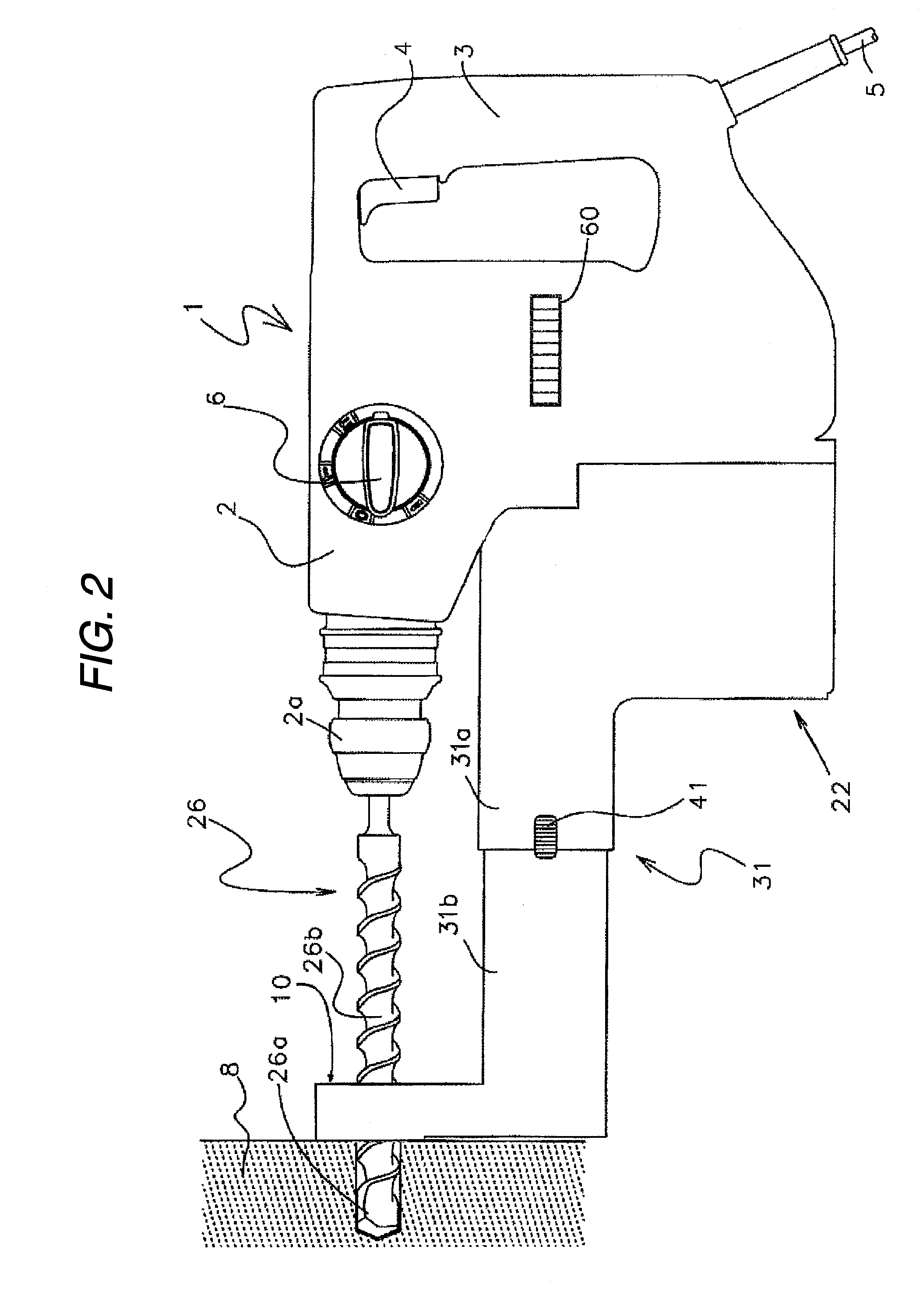Drilling tool with dust collector
a technology of dust collector and drilling tool, which is applied in the field of drilling tools, can solve the problems of increased cost, method lack of portability, and device lack of portability, and achieve the effects of improving workability, reducing size, and increasing dust collection efficiency
- Summary
- Abstract
- Description
- Claims
- Application Information
AI Technical Summary
Benefits of technology
Problems solved by technology
Method used
Image
Examples
first embodiment
[0056]Although the present invention has been described thus far, various applications and modifications may be made in the embodiment. FIG. 3 shows an example of the modification. The operator withdraws the drill bit 26 from a drilled hole 8a after the production of the drilled hole 8a. Next, the blowoff port 10a of the dust collection adaptor 10 is moved close to the drilled hole 8a such that its center axis is positioned in the drilled hole 8a. Then, when the motor 18 is driven by operating the switch 4, the air blown from the blowoff port 10a flows into the drilled hole 8a which is opened in the axial direction of the drill bit 26, blows the remaining dust out of the drilled hole 8a, and guides the remaining from the dust collection port 10b to the dust collection passage 11. With this operation, it becomes possible to favorably remove the dust remaining in the drilled hole.
[0057]As for the amount of the air moved to the dust collection case 12 and the amount of the air blown fr...
second embodiment
[0059]Next, a drilling tool showing the present invention will be described by using FIGS. 5 to 12. FIG. 5 shows an overall view of a drilling tool having a dust collector. Portions which are the same as those shown in FIG. 1 are designated by the same reference numerals, and their repeated descriptions will be omitted.
[0060]The housing 2 accommodates a motor portion, a cylinder portion, a handle portion, and a transmission drive unit. In the housing 2, the motor 18 as a driving source is vertically accommodated. At an upper end of an output shaft (motor shaft) 19 extending upwardly above the motor 18, a pinion 38 is integrally formed. On both sides of the output shaft 19 of the motor 18, a crankshaft 39 and an intermediate shaft 40 are vertically and rotatably supported, and gears are attached to the intermediate height positions of the crankshaft 39 and the intermediate shaft 40. These gears are engaged with the pinion 38 described above which is formed at the end portion of the m...
fourth embodiment
[0093]In the fourth embodiment, as a device to increase the inflow pressure, a guide portion 138 protruding toward the direction of the center of the centrifugal fan is additionally formed adjacent to the downstream side of the airflow sending port 136. The detail thereof will be described by using FIG. 20. FIG. 20 is a partially enlarged view for illustrating a positional relation of the guide portion 138 of FIG. 6.
[0094]In FIG. 20, in order to indicate the position of the cylindrical inner wall of the housing, a reference line 139 in the dashed line is drawn. As can be seen from the comparison between the reference line 139 and the state of the protrusion of the guide portion 138, the guide portion 138 obtained by protruding the inner wall portion on the downstream side of the airflow sending port 136 by the distance B in the direction of the center of the centrifugal fan is formed. Thus, by forming the guide portion 138, the airflow flowing toward the direction indicated by an ar...
PUM
 Login to View More
Login to View More Abstract
Description
Claims
Application Information
 Login to View More
Login to View More - R&D
- Intellectual Property
- Life Sciences
- Materials
- Tech Scout
- Unparalleled Data Quality
- Higher Quality Content
- 60% Fewer Hallucinations
Browse by: Latest US Patents, China's latest patents, Technical Efficacy Thesaurus, Application Domain, Technology Topic, Popular Technical Reports.
© 2025 PatSnap. All rights reserved.Legal|Privacy policy|Modern Slavery Act Transparency Statement|Sitemap|About US| Contact US: help@patsnap.com



